The United States' efforts during World War II drew heavily on both the people and resources of the state of Florida.
More than 250,000 Floridians volunteered or were drafted into the armed forces. Dozens of military bases were established or expanded in the state, and personnel flooded into Florida by the thousands. Many soldiers, sailors, marines, airmen and nurses who trained or served in Florida later returned to the state as visitors or new residents and helped fuel the postwar economic boom.
A student at the Florida State College for Women reading a newspaper article about the Pearl Harbor attack on December 7, 1941.
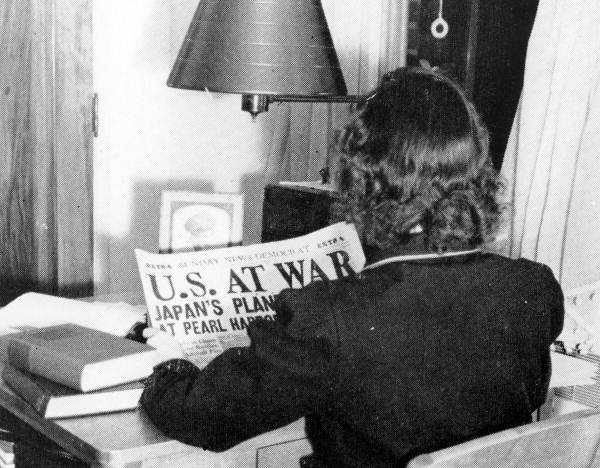
Agriculture
Agriculture was Florida's primary economic contribution to the war effort. Prices for agricultural goods generally increased during the war years. The price of cotton, for example, doubled during the war. Citrus production in Florida surpassed that of California for the first time in 1942-43 with 80 million boxes produced.
A shortage of agricultural laborers necessitated the importation of approximately 75,000 Bahamians and Jamaicans to work in Florida. These temporary workers from the British West Indies suffered through difficult conditions as they toiled in sugar fields south of Lake Okeechobee.
Orange groves, 1941.
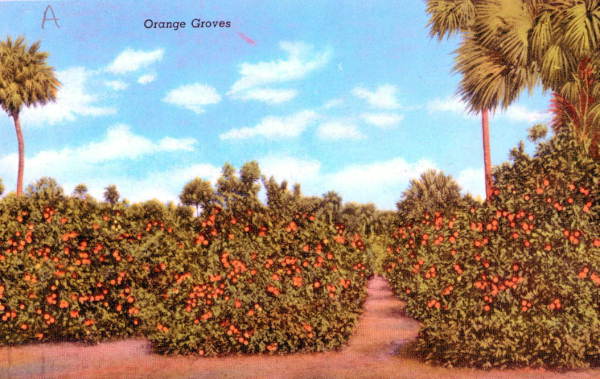
Bahama natives arriving in Miami for work in U.S. fields, 1943.
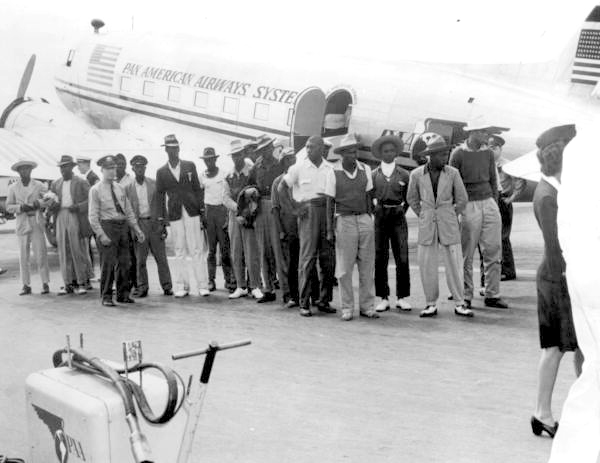
Wartime Industry
Although several Florida industries grew during World War II, shipbuilding became the principal manufacturing contribution of Florida to the war effort. Wainwright Shipbuilding in Panama City built 108 vessels during the war and employed 15,000 workers. Over 9,000 employees worked in shipbuilding in the Tampa Bay area. Even landlocked Orlando produced 9,000 assault boats used in amphibious landing operations, such as the D-Day invasion of Europe.
Men and women operating milling machine at St. Johns River Shipbuilding Company.
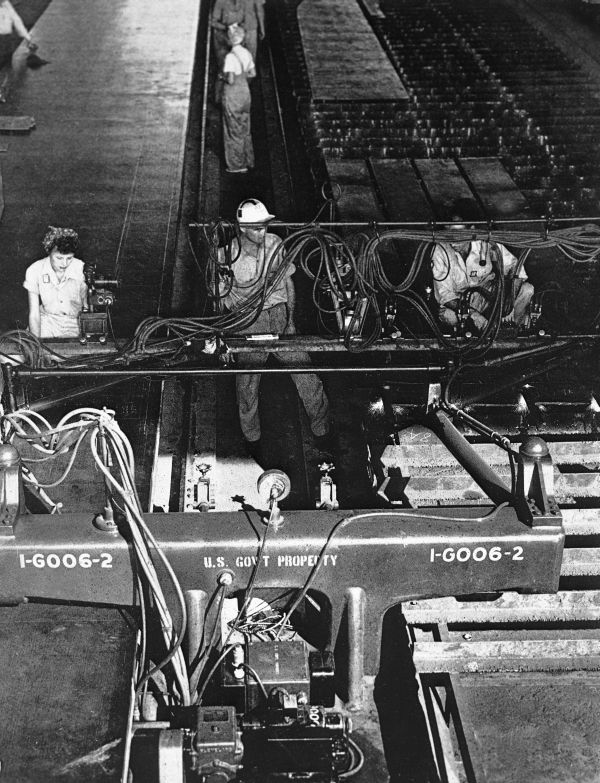
Welder at work at the St. Johns River Shipbuilding Company in Jacksonville, ca. 1943.
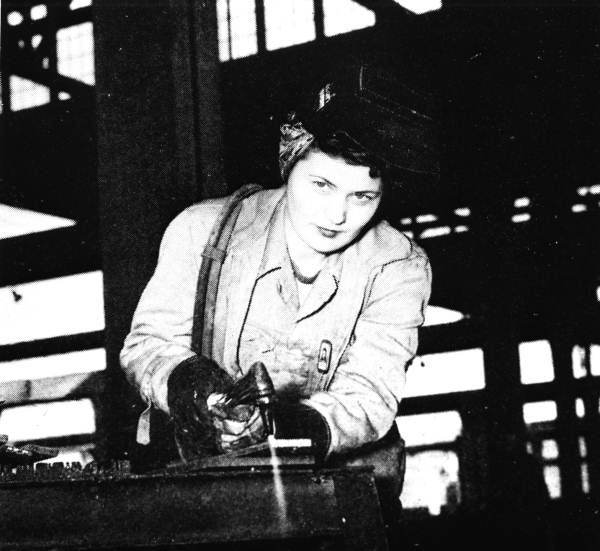
Social Change
Wages improved and jobs became plentiful due to the large number of men in the armed services. Women, as well as African Americans and other ethnic minorities made small but significant inroads into professions previously dominated by white males.
An Act of Congress during World War II allowed women to enlist for noncombat duties in the Women's Auxiliary Army Corps (WAAC), the Women Accepted for Voluntary Emergency Service (WAVES), Women's Auxiliary Ferrying Squadron (WAFS), and Semper Paratus Always Ready Service (SPARS), the Women's Reserve of the Marine Corps.
Find Your War Job in Industry - Agriculture - Business - poster, 1943.

Poster produced by the United States Office of War Information showing a woman working at a machine saying, "I've found the job where I fit best." The poster encourages citizens, women in particular, to get jobs in industry, agriculture or business.
2nd Lieutenant Sarah Kaplan.

Sarah Kaplan was a 2nd Lieutenant in the Army Medical Corps who served under General Patton in the Battle of the Bulge as a nurse.
President James A. Colston of Bethune-Cookman College with WWII vet and students.
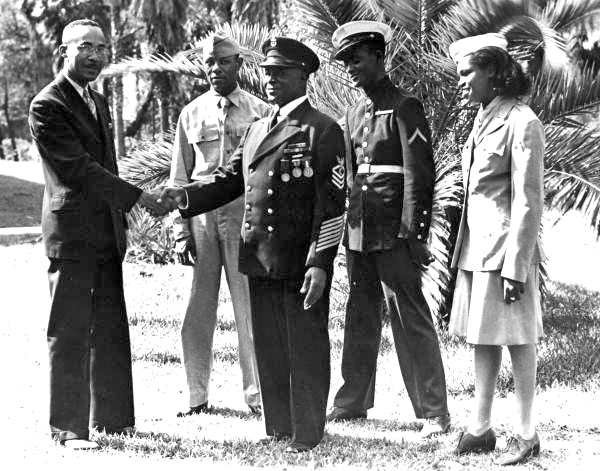
Civil Defense
Florida State College for Women students in the College Defense Garden, 1942.

Volunteer registration at the Civic Exhibition Center in St. Petersburg, 1942.

African American motorcycle troops for civil defense, ca. 1942.
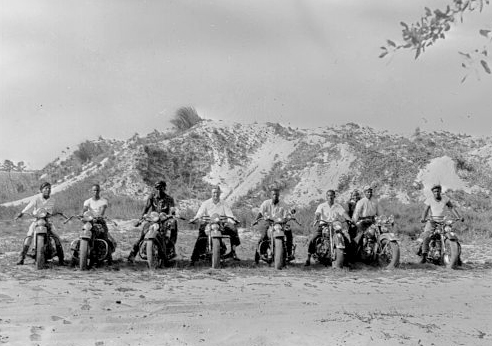
Military Training
World War II served as the catalyst for Florida's explosive postwar economic and demographic growth. These changes were reflected in the state's population, which grew 46.1% during the decade of the 1940s and expanded at an even more rapid pace in the 1950s.
Favorable weather and ample land made Florida one of the primary areas selected for military base construction during World War II. Between 1941 and 1945, more than 200 military installations were built or expanded in Florida, which required 1.2 million acres of land and cost $306 million.
U.S. Navy dive bombers flying over Miami during WWII.
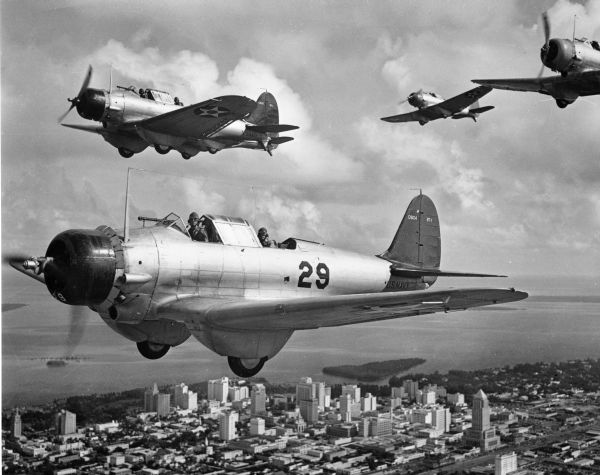
Amphibious landing training at Carrabelle Beach.
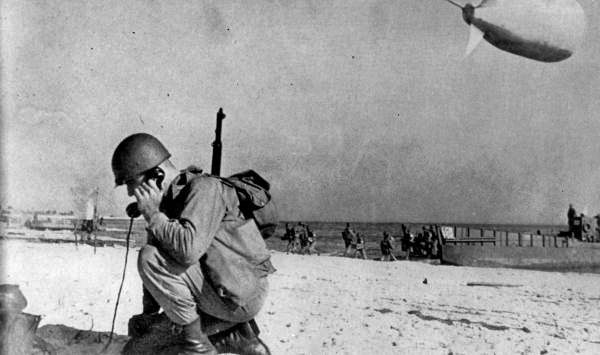
Soldiers training for war at Camp Gordon Johnston.
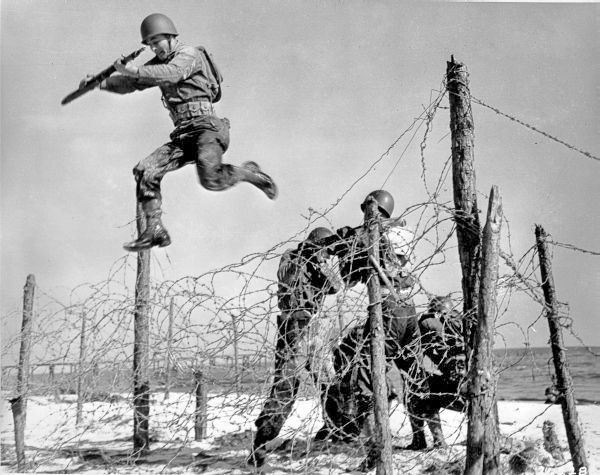
Flight crew in training at Dorr Field, near Arcadia.
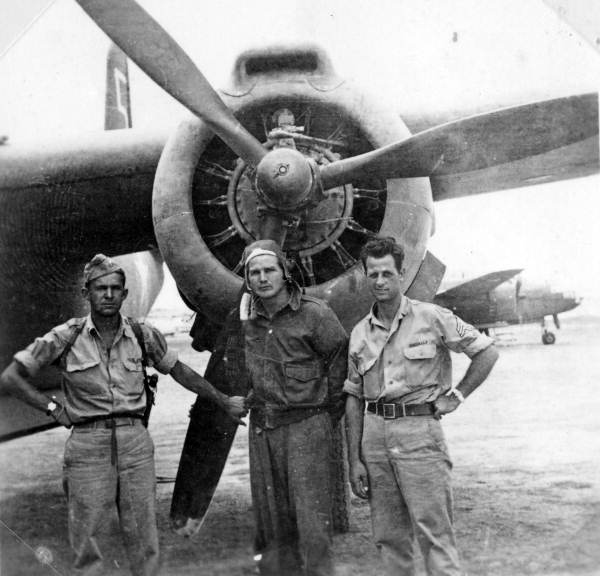
Training exercises at Miami Beach.
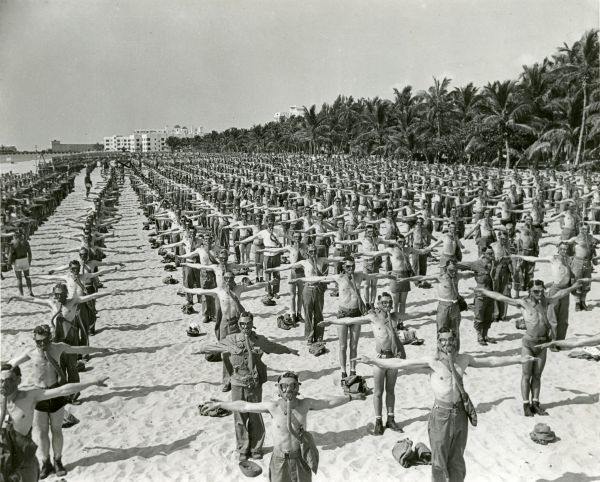
The War Comes to the Florida Coast
Blackout orders forced hotels and other tourism industry businesses along the coast to dim their lights each evening. This was done to prevent silhouetting ships at sea against bright coastal lights, which made them easier targets for German U-boats operating in Florida waters.
Tanker Gulfland burning off Hobe Sound, Florida.

The tanker Gulfland burned off Hobe Sound for 53 days after colliding with tanker Gulfbelle on October 21, 1943. Both were traveling without lights to avoid German submarines that hunted ships along the Florida coast.
Salvaging a British vessel torpedoed off Cocoa Beach, 1943.

The British ship was torpedoed three miles off Cocoa Beach, Florida. A WWI converted destroyer, owned by Lovett's food chain and used to transport bananas, scared off the submarine and rescued the crew.
The War Ends
East Flagler Street in Miami 20 minutes after surrender.

Navy sailors celebrating V-J Day in Miami.

After the War
Several communities witnessed explosive population growth during World War II – a trend that continued in some areas after the war. Miami's population jumped from 172,000 in 1940 to 250,000 by 1950. The population of Key West doubled from 15,000 to 35,000 in a single year, 1943. Panama City, a shipbuilding center in the Florida panhandle, increased from a small town of 11,000 in 1941 to a city of 50,000 by 1943.
The long-term impacts of World War II continued for several decades after the war ended in 1945. Florida's growth mirrored conditions in other parts of the country, particularly the region dubbed the Sunbelt. Many soldiers, sailors, marines, airmen and nurses who trained or served in Florida later returned to the state as visitors or new residents and helped fuel the postwar economic boom.
Military personnel vacationed and retired in the Sunshine State in large numbers. New defense-related industries, such as the space program, grew throughout the Cold War. The Interstate Highway System brought record numbers of tourists to the state and created boomtowns seemingly overnight.
In response to the GI bill, Florida State College for Women begins accommodating males students.
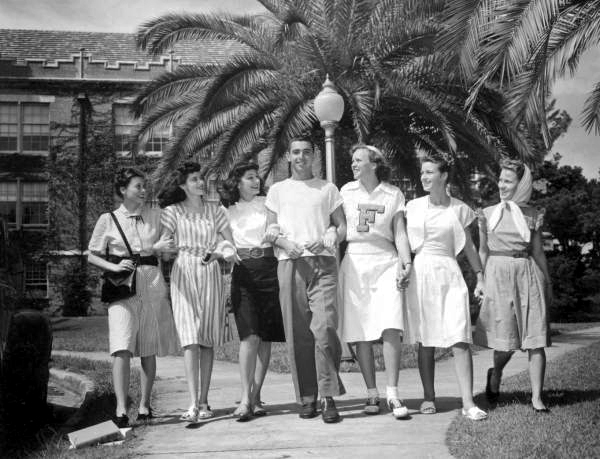
The University of Florida was overwhelmed with veterans returning from World War II and wanting a college education after Congress passed the GI Bill. At first, the university established a temporary branch in Tallahassee to handle the overflow, with FSCW professors teaching the classes. In 1947, the legislature made FSCW itself co-educational so both male and female students could attend. The newly converted school was called Florida State University.
Florida Agricultural and Mechanical College for Negroes president William H. Gray, left, looking over architectural plans, 1946.
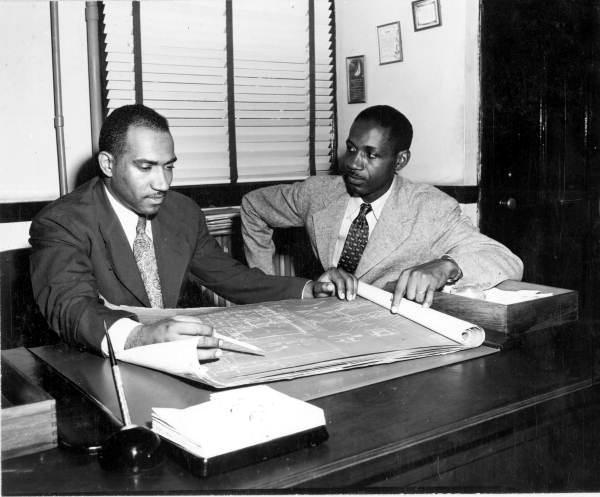

 Listen: The Blues Program
Listen: The Blues Program





















